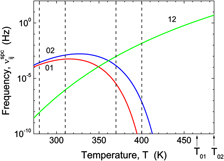Crossref Citations
This article has been cited by the following publications. This list is generated based on data provided by
Crossref.
Misztal-Faraj, Beata
and
Ziabicki, Andrzej
2011.
Modeling of phase transitions in three-phase polymorphic systems: Part II. Effects of material characteristics on transition rates.
Journal of Materials Research,
Vol. 26,
Issue. 13,
p.
1596.
Misztal‐Faraj, Beata
and
Ziabicki, Andrzej
2012.
Effects of predetermined nuclei and limited transformation on polymorphic crystallization in a model polymer.
Journal of Applied Polymer Science,
Vol. 125,
Issue. 6,
p.
4243.
Misztal-Faraj, Beata
2013.
A simple model of plate-like crystallization with constant plate thickness.
Journal of Materials Research,
Vol. 28,
Issue. 9,
p.
1224.
Misztal-Faraj, Beata
Pęcherski, Ryszard B.
Denis, Piotr
and
Jarecki, Leszek
2019.
Modeling of oriented crystallization kinetics of polymers in the entire range of uniaxial molecular orientation.
Polymer,
Vol. 173,
Issue. ,
p.
141.
Misztal-Faraj, Beata
Ciupak, Marcelina
Pęcherski, Ryszard
and
Jarecki, Leszek
2022.
Modeling of polymorphic composition development during isothermal crystallization of poly(l-lactide acid).
Polymer,
Vol. 243,
Issue. ,
p.
124618.
Misztal-Faraj, Beata
Jarecki, Leszek
and
Pęcherski, Ryszard B.
2023.
Modeling of the kinetics of polymorphic isothermal crystallization of poly(l-lactide) subjected to uniaxial molecular orientation.
Polymer,
Vol. 281,
Issue. ,
p.
126126.
Azevedo Antunes, Luis
Ganser, Richard
Schroeder, Uwe
Mikolajick, Thomas
and
Kersch, Alfred
2024.
Insights Into Curie‐Temperature and Phase Formation of Ferroelectric Hf1−xZrxO2with Oxygen Defects from a Leveled Energy Landscape.
Advanced Materials Interfaces,
Vol. 11,
Issue. 2,
